Mark Lettieri: "It’s funny that I have a guitar with so many options, because I like my amps as simple as possible. If there are switches on amps, I freak out!"
Lettieri discusses the creation of his new signature Fiore, which sees PRS debut a new body shape that's designed for all styles
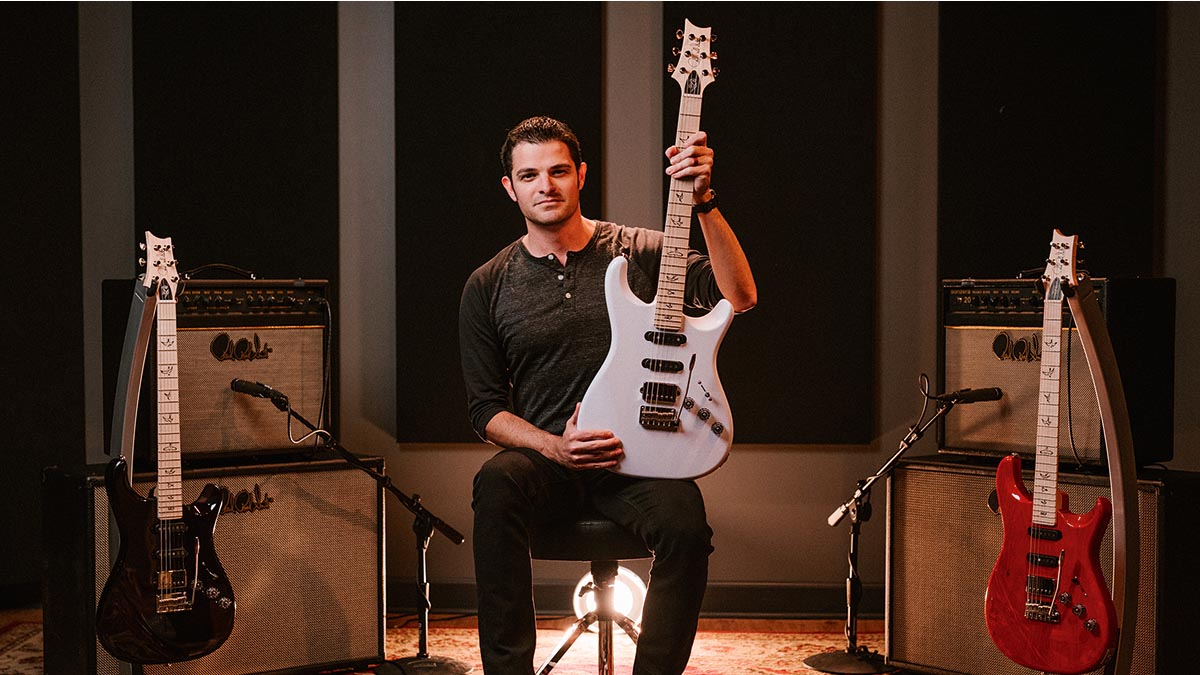
Mark Lettieri is one of the most in-demand players in the world at the moment. Aside from his edgy instrumental jazz work with Snarky Puppy, he’s also a close musical compadre of neo-funk stars Vulfpeck.
We catch up with him to find out how, with Paul Reed Smith’s help, he designed a guitar to cover all musical terrains – and how tins of soup played an unexpectedly important role in the process…
How did the idea to do a signature guitar with PRS come about?
“I started working with them primarily with the 594 platform, the McCarty 594, which really was the guitar that turned me on to PRS and reignited an interest in what they were doing.
“Talking to Paul and talking to the team there, they really made me feel welcome and made me understand that they know how to build a damn guitar. And so when they came to me with the idea to do a model, it wasn’t really on my radar to do something with them. But, you know, it’s not really something you turn down.
“It’s an interesting idea to dig into the single-coil, bolt-on thing, which they’ve done before with the Silver Sky and in different guitars prior. So I thought it would be a fun challenge for us and for me. And I was convinced we would get something really cool, unique and special at the end of it.”
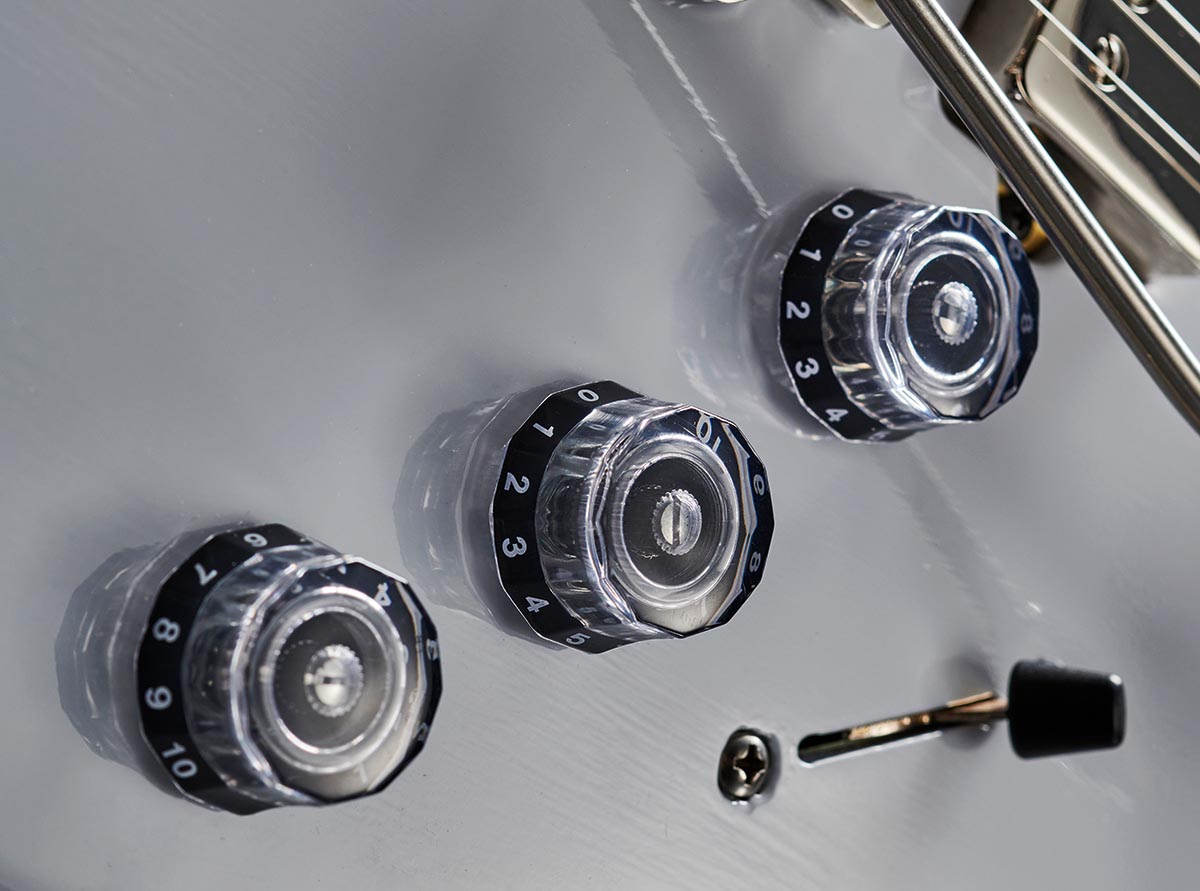
Why did you choose an HSS configuration over three single-coil pickups?
Get The Pick Newsletter
All the latest guitar news, interviews, lessons, reviews, deals and more, direct to your inbox!
“I’ve been an HSS pickup configuration person since I was 15 years old. I think I’ve always been into having guitars with different pickup combinations beyond your basic five-way switch…”
And what about the wood selection?
“I love swamp ash bodies, I love maple necks with slightly larger fretboards. And so with PRS, those are kind of the things I was bringing in. But I was also a little bit open to seeing where they would take the tone that was in my head, you know, which is sort of the same all the time, but changing as I progress as a player.
“I wanted to make sure that we could find that happy medium with everything. There were lots of elements of my favourite guitars in that guitar. But also it was designed as sort of a continuation of something that could take me into the future.”
How do you like your guitar to interact with the amp? Do you prefer to get all your compression and drive from pedals or to have the pickups drive the amp into natural compression?
“I’m definitely a natural compression player. I don’t favour compressor pedals all that much. I mean, I have used them in the past. In fact, I think I’ve actually got one on my pedalboard now – but it’s the most uncompressor-sounding compressor and I use it for a very specific role when I switch between my baritone guitar and regular guitar. So, yes, I do prefer to hit the front of the amp to get that natural tube compression.
We designed the pickups in-house... We figured, let’s just make them all together [with the guitar] so we know that they’re going to work great
“I don’t like super-hot pickups, though, because I feel like that clouds my dynamics a lot. But I don’t like them to be too low-wind because then I don’t stick out in the mix. So we put a lot of work into figuring out the pickups and how they work with my hands and how they work together – because we do have all the switching options, which apparently the internet is very confused by!
“But it’s actually really simple [laughs]. If you give yourself, like, two minutes, you can figure it out. It’s not that hard. You don’t need a manual. And so it was important that all the pickups worked seamlessly. I like hearing the sound of my fingers; I don’t like to hear magnets so much. That’s sort of an esoteric answer.”
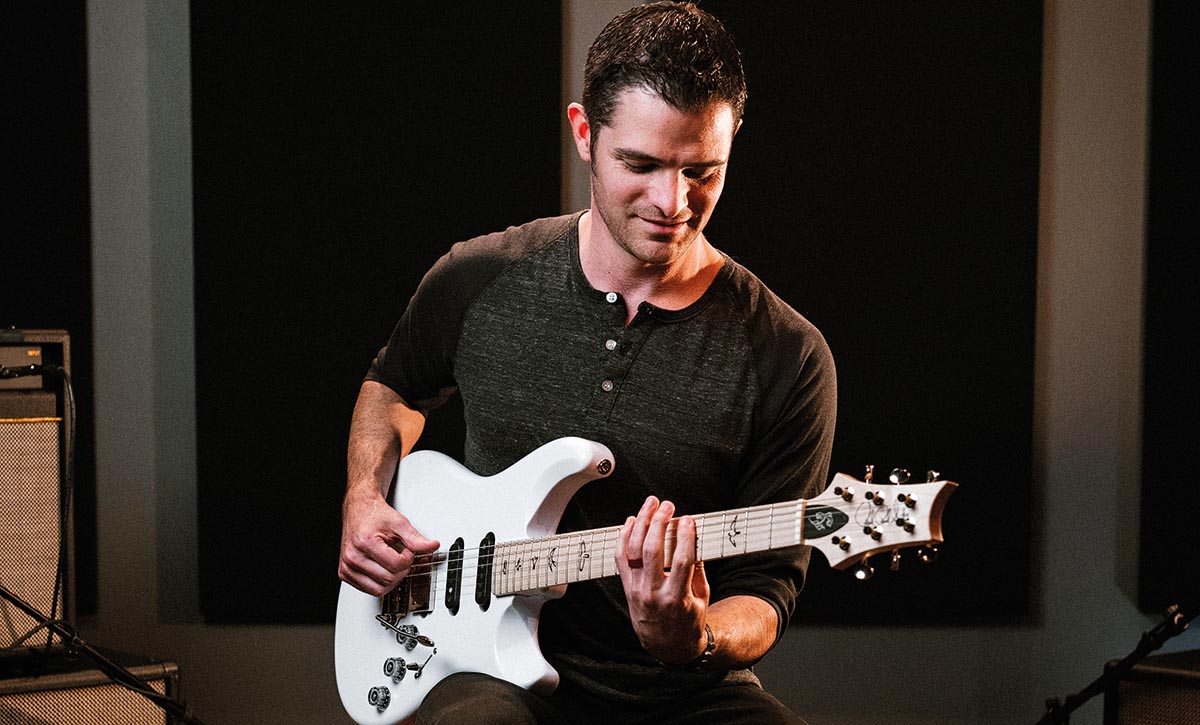
A danger of HSS pickup configurations is that the humbucker overpowers the two singles, leaving the guitar feeling unbalanced. How did you avoid that happening on the Fiore?
“Well, we designed the pickups in-house. I mean, we had thought about maybe using another brand or an aftermarket thing, but then you’re just throwing darts at a dartboard at that point. So we figured, let’s just make them all together [with the guitar] so we know that they’re going to work great.
“Like you said, that’s generally the issue when you just start swapping pickups – it’s a case of, ‘Well this is too hot, but there’s nothing I can do about it except get another different one.’ So rather than that, we wanted to save everyone the trouble – but it definitely made a lot more work for us initially.
“There was a lot of FedEx’ing of guitars back and forth with different pickup outputs and winds and magnet sizes and things like that, because with all these switching options I wanted them all to be usable and sound good. I didn’t really want, like, 70 per cent of them to be cool and the other 30 per cent to be just a gimmick or something. I use all the 11 or 15 positions or whatever [laughs].”
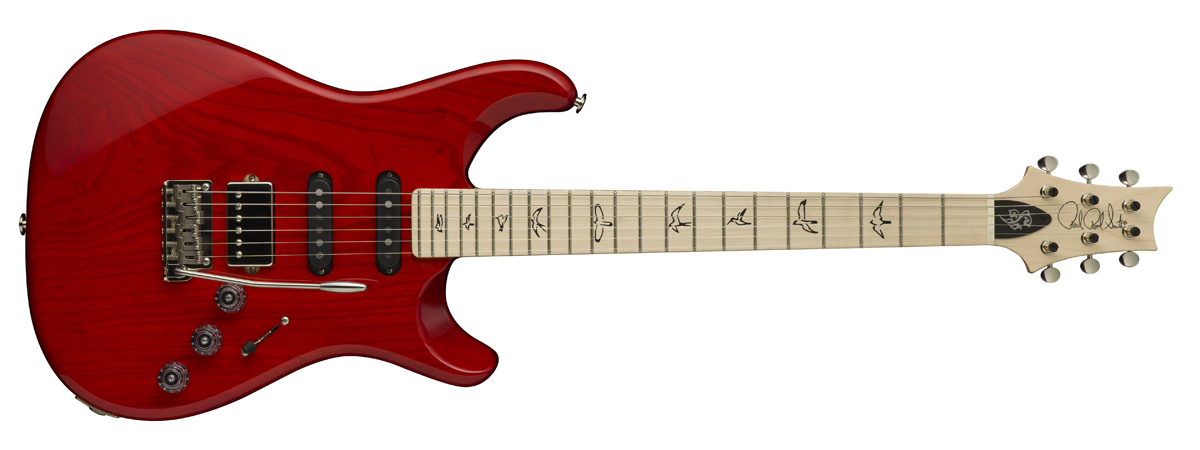
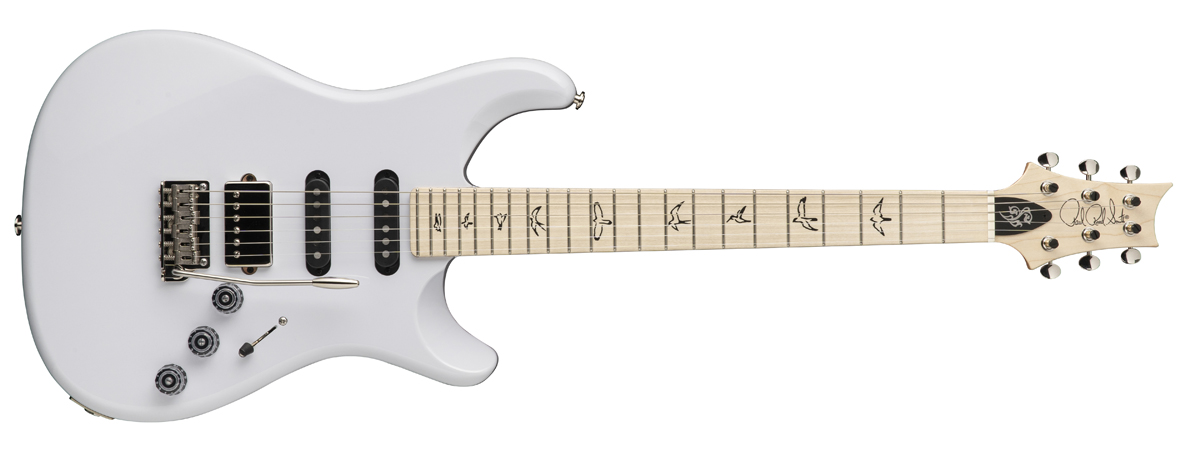
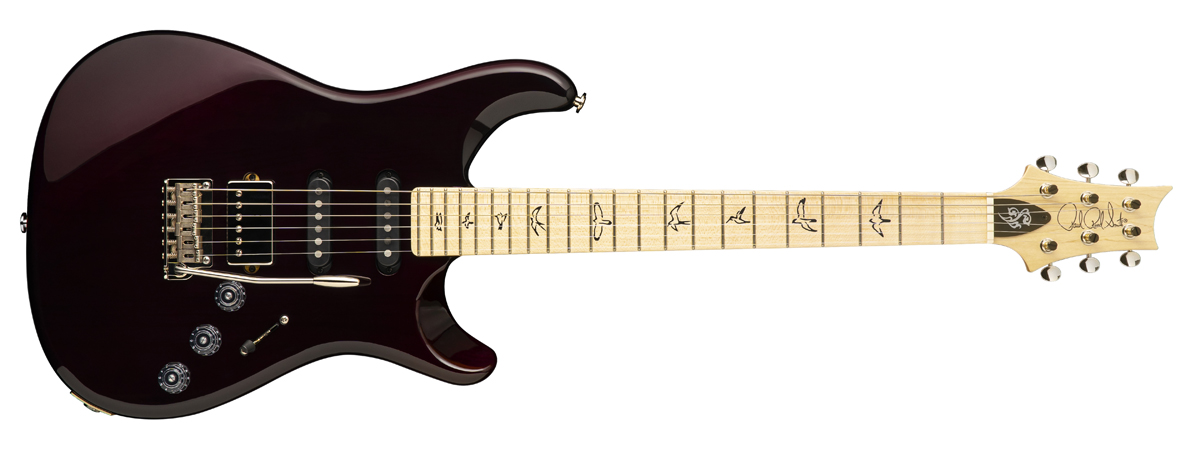
What role does the humbucker play in your music? Is it just extra oomph for solos or there more for a different tonal colour?
“I think it’s both. I mean, it’s oomph for the solos. It’s versatility in the studio or on a gig or whatever. And I have bright[-sounding] hands, which is another thing that’s caused controversy on the internet. Apparently, if you read the comments, some people are like, ‘What are you talking about?’ But I’m like, ‘Yeah, listen, listen to yourself. You might have dark hands and bright hands or whatever.’
“And so it’s a little zingy on the bridge, for me, sometimes if I use a single coil there. So with the Fiore humbuckers, we came up with something that’s that’s powerful and big but not overpowering. You still get a lot of clarity in there; it’s not real chunky. It’s a great middle ground. It’s a great happy-medium pickup, which is what I wanted.”
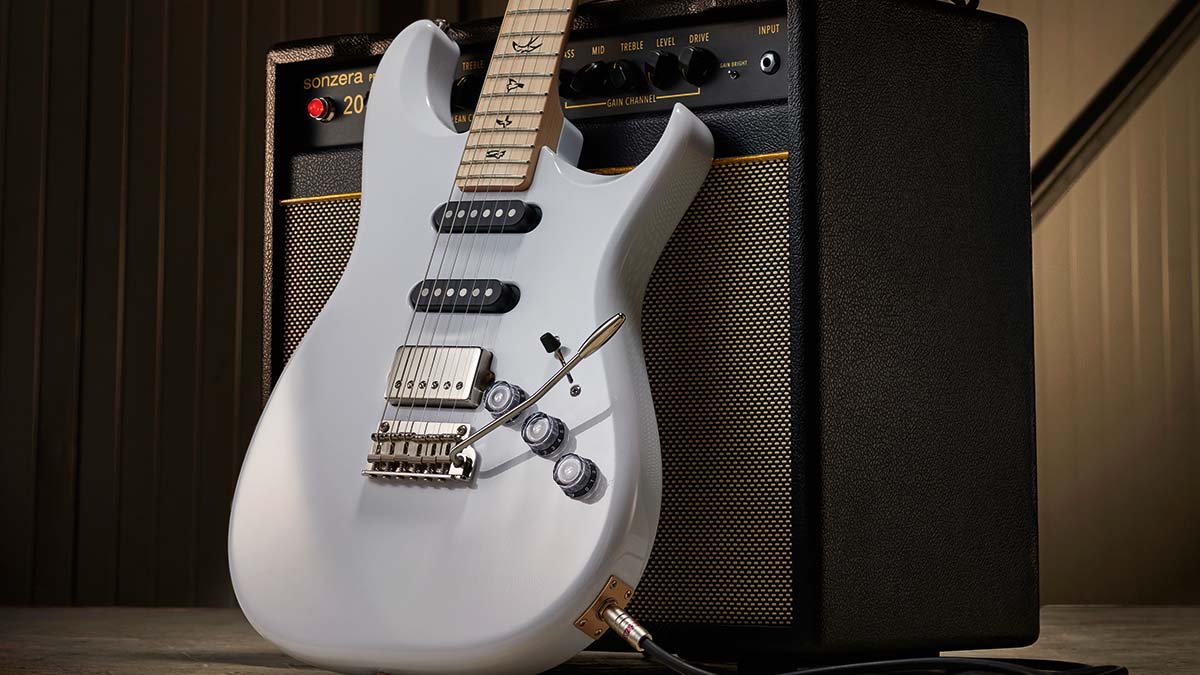
Most players tend to have just one or two pickup sounds that they really like and use most often – but you’re the opposite and routinely use a wide range of voices…
“It’s funny that I have a guitar that has so many options because I like my amps as simple as possible. You know, if there are switches on the amps, I freak out! But if there’s stuff on the guitar…
“There are two push-pull switches and a five-way and you get your hands on it and it’s a case of, ‘Okay, this makes sense,’ and you memorise and it’s very easy to figure out. I had that [extended switching options] mod done on an old Strat of mine years ago and then another guitar that’s very dear to my heart, that blue Don Grosh that I played has a sort of a similar thing.
“But they do it with a blending knob instead of just a push-pull. But a push-pull is great because it’s just hit it and quit it, you know? I’ll put it in the bridge position, pull up one of the switches and get that clean Tele sound for my funk tone, and when I’ve got to kick into a lead, I just switch the thing back down and go straight to full humbuckers, step on a gain pedal and I’m ready to roll. It’s very seamless how we’ve put it together.”
How about the fingerboard? The guitar has certain trappings of classic single-coil/double-cut designs, but what did you personally want on this guitar?
“Really, I like anywhere between a nine- and 10-inch radius. The Fiore is 10-inch all the way across. I’ve never been that into compound radiuses. I’m not a stainless steel fret fan – too hard and slippery for me.
“But I like a healthy fret size, you know. So they’re wide and tall but not super narrow and super tall, or super wide and flat. They’re just jumbo frets, or whatever. I think every fretwire maker has a different name for the same size [laughs]. We were going back and forth and I was like, ‘These are good, guys. But I don’t know what to call them!’”
I remember one time we were going back and forth with the body weight – is it too light, is it too heavy, whatever...
What was working with Paul like?
“Well, that was the joy of it because I’m not a guitar builder, I’m just a guitar player. So I know what I hear in my head and what I need to get out with my hands. But Paul can explain it technically to me.
“I remember one time we were going back and forth with the body weight – is it too light, is it too heavy, whatever – and I remember being on the phone with him and he’s having me tape soup cans to one of the guitars and then standing on a scale.
“And he’s like, ‘Okay, how many cans you got?’ ‘I got two cans.’ ‘All right, take one of them off. Right, how does that feel?’ … That’s what I want when I’m building a guitar. I want to tape soup cans to the guitar; I want to get my hands dirty. Paul is the kind of builder that’s going to do all the crazy stuff to make sure we’re getting exactly what we want.”
Jamie Dickson is Editor-in-Chief of Guitarist magazine, Britain's best-selling and longest-running monthly for guitar players. He started his career at the Daily Telegraph in London, where his first assignment was interviewing blue-eyed soul legend Robert Palmer, going on to become a full-time author on music, writing for benchmark references such as 1001 Albums You Must Hear Before You Die and Dorling Kindersley's How To Play Guitar Step By Step. He joined Guitarist in 2011 and since then it has been his privilege to interview everyone from B.B. King to St. Vincent for Guitarist's readers, while sharing insights into scores of historic guitars, from Rory Gallagher's '61 Strat to the first Martin D-28 ever made.
“There’d been three-minute solos, which were just ridiculous – and knackering to play live!” Stoner-doom merchants Sergeant Thunderhoof may have toned down the self-indulgence, but their 10-minute epics still get medieval on your eardrums
“There’s a slight latency in there. You can’t be super-accurate”: Yngwie Malmsteen names the guitar picks that don’t work for shred


![A black-and-white action shot of Sergeant Thunderhoof perform live: [from left] Mark Sayer, Dan Flitcroft, Jim Camp and Josh Gallop](https://cdn.mos.cms.futurecdn.net/am3UhJbsxAE239XRRZ8zC8.jpg)








